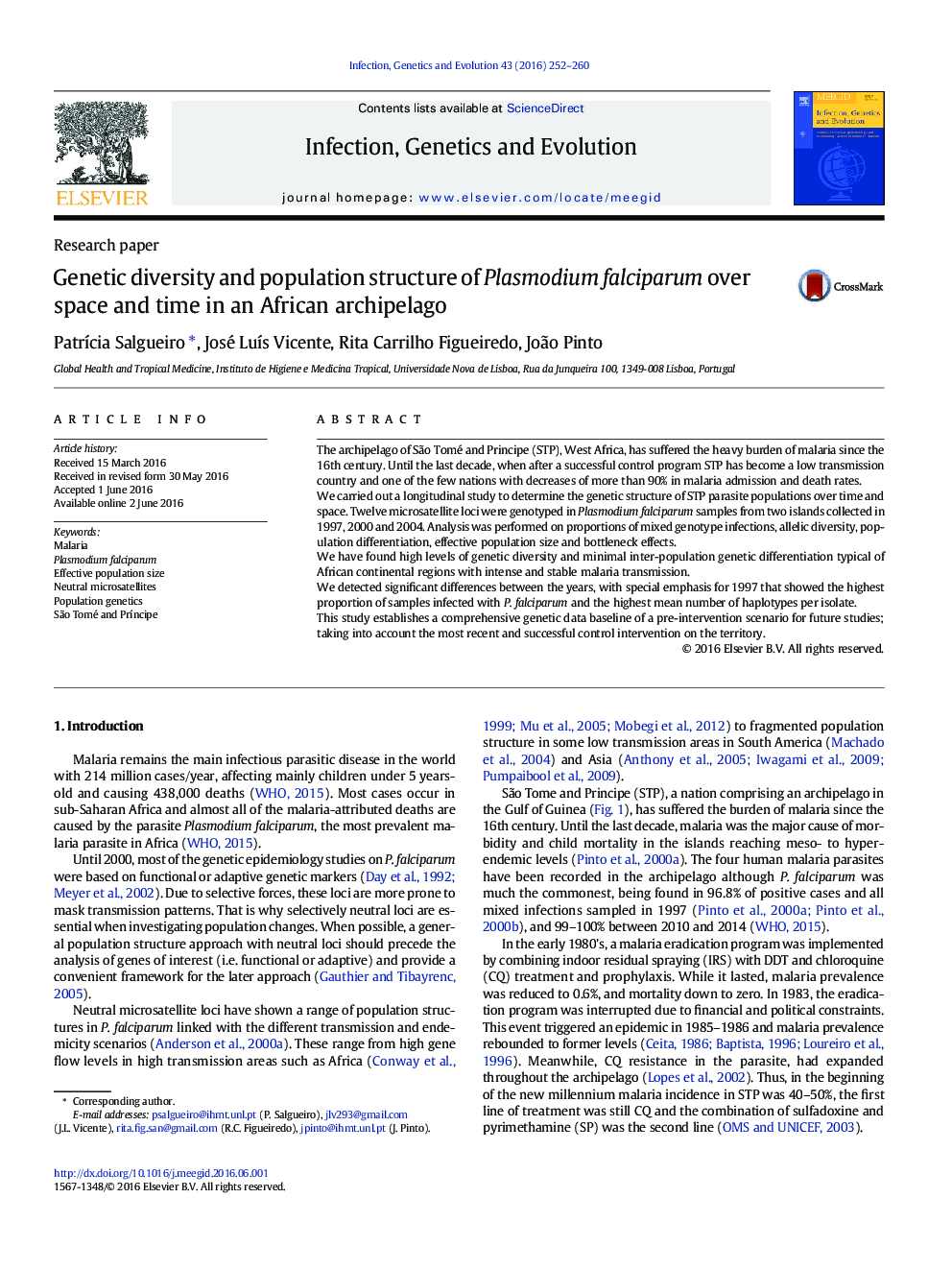| Article ID | Journal | Published Year | Pages | File Type |
|---|---|---|---|---|
| 2822965 | Infection, Genetics and Evolution | 2016 | 9 Pages |
•STP is a major success case in malaria control in Africa.•P. falciparum samples collected over 8 years were genotyped at 12 microsatellites.•We found high levels of He and minimal inter-population Fst.•We found significant Fst between the years, with special emphasis for 1997.•This is a comprehensive genetic data baseline prior to artemisinin introduction.
The archipelago of São Tomé and Principe (STP), West Africa, has suffered the heavy burden of malaria since the 16th century. Until the last decade, when after a successful control program STP has become a low transmission country and one of the few nations with decreases of more than 90% in malaria admission and death rates.We carried out a longitudinal study to determine the genetic structure of STP parasite populations over time and space. Twelve microsatellite loci were genotyped in Plasmodium falciparum samples from two islands collected in 1997, 2000 and 2004. Analysis was performed on proportions of mixed genotype infections, allelic diversity, population differentiation, effective population size and bottleneck effects.We have found high levels of genetic diversity and minimal inter-population genetic differentiation typical of African continental regions with intense and stable malaria transmission.We detected significant differences between the years, with special emphasis for 1997 that showed the highest proportion of samples infected with P. falciparum and the highest mean number of haplotypes per isolate.This study establishes a comprehensive genetic data baseline of a pre-intervention scenario for future studies; taking into account the most recent and successful control intervention on the territory.
